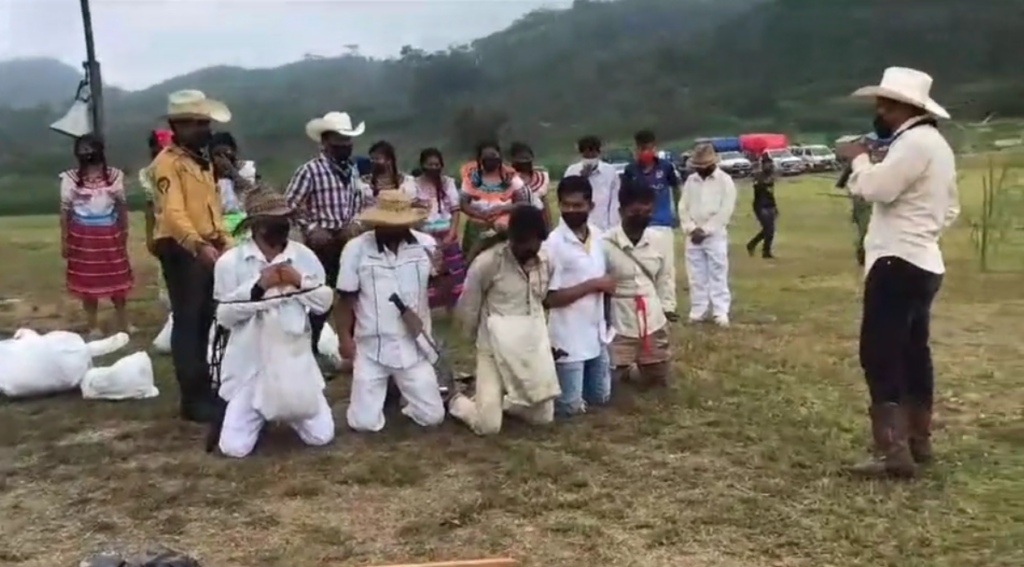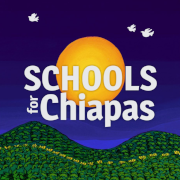Luis Hernández Navarro

Until the Zapatistas took up arms on January 1, 1994, the lords of money and power in Chiapas exercised savage exploitation and ruthless violence against indigenous people and peasants. On farms, plantations and ranches, the masters owned the lives, lands and natural resources of the peonage.
They put their cattle to graze on communal and ejido lands and, at the slightest opportunity, appropriated them. They promoted a kind of mining cattle ranching that devoured soils, forests and jungles. They practiced rapacious forestry, cutting down precious woods without consideration. In plantations that looked like a branch of hell, they developed a coffee industry destined for export, intensive in the use of labor, imported from the Highlands and Guatemalans.
Landowners exploited, discriminated, dispossessed and dominated Indians and poor peasants using violence. Both legitimate violence, from the State, and de facto violence, applied by their irregular armies of gunmen and white guards. The massacre of Golonchán Viejo, at the hands of the Army on June 15, 1980, is an example of the former. Patrocinio González Garrido, governor of the state between 1988 and 1993, legalized the latter under the name of Uniones de Defensa Ciudadana (Citizen Defense Unions), which operated in Ocosingo, Yajalón, Salto del Agua, Tila, Tumbalá, Sabanilla, Altamirano, Chilón and Sitalá.
Things changed for the members of the Zapatista Army of National Liberation (EZLN) when, in accordance with the Constitution, they declared war on the Mexican Federal Army, the basic pillar of the dictatorship we are suffering, monopolized by the party in power and headed by the Federal Executive, today held by its maximum and illegitimate chief, Carlos Salinas de Gortari, called on the other powers to depose the dictator (https://shorturl.at/lmnuL) and took action.
In addition to the militarization of the state, which has increased over the years, the government has responded by encouraging the birth and action of paramilitary groups. These groups of armed civilians have commanders, are comprised of indigenous people, poor peasants and teachers (and often serving or discharged military personnel), recruited from communities benefiting from official clientelist programs.
They were armed, trained, financed and used by the Army to fight the rebels, their support bases or villagers seeking neutrality. Their incubation and proliferation were the result of a decision by those in power. Unlike the armed forces, these groups are accountable to no one and escape any public scrutiny. They can act with absolute impunity. They are the hidden hand of power, Luna’s other side of a war that is not called by name.
The result of their actions was (and is) bloody. Between 1995 and 2000, Paz y Justicia murdered more than 100 indigenous Choles in the northern zone of Chiapas, expelled at least 2,000 peasants and their families from their communities, closed 45 Catholic churches, attacked bishops Samuel Ruiz and Raúl Vera, stole more than 3,000 head of cattle and raped 30 women.
Paz y Justicia had the support of General Mario Renan Castillo, head of the 7th Military Region. He was key in Ernesto Zedillo’s low intensity war against the Zapatistas. He sought territorial control of the strategic corridor that connects the Chiapas Cañadas with Tabasco. At the beginning of this century, it temporarily fell into disgrace. However, it managed to recover with the coverage of the Green Ecologist Party of Mexico.
A crucial moment in the counterinsurgency escalation was the Acteal massacre. On December 22, 1997, paramilitaries savagely murdered 45 displaced persons belonging to the Las Abejas group, who were peacefully praying for peace in a hermitage.
In recent years, in regions such as Chenalhó, Chilón, Chalchihuitán, Chavajeval, Oxchuc or Ocosingo, armed civilian groups have re-emerged, carrying out counterinsurgency tasks and responsible for the forced displacement of thousands of people. The impunity with which they act is indicative of the powerful interests they serve.
Human rights defenders and popular leaders are assassinated, shot from motorcycles. This happened, among other cases, in January 2019, in Arriaga, with Sinar Corzo. Also with the catechist Simón Pedro Pérez, executed in the market of Simojovel, in July 2021.
The growing and increasingly bloody dispute between the Jalisco New Generation Cartel and the Pacific Cartel for the control of the border with Guatemala, the routes for smuggling and transfer of undocumented migrants, the payment of tolls, the recruitment of young people, and the control of drug production zones and markets is not just a fight between criminals. It is, as demonstrated by the ruthless assassination of Chicomuselo’s leader, Professor José Artemio López Aguilar, an offensive against popular organizations, the Believing People and progressive evangelical groups that resist them.
It is a new form of war that also refuses to say its name, with change and continuity with the previous one, against Zapatistas and their territories and autonomous governments. Narcos, allies and sponsors, want to encircle and strangle the communities in rebellion. In addition to obstructing their businesses, blocking routes and hindering their logistics, they are indomitable: they cannot command them. And that is unacceptable to them.
Original text published in La Jornada on December 5th, 2023. https://www.jornada.com.mx/2023/12/05/opinion/019a1pol#texto
Translation by Schools for Chiapas.
